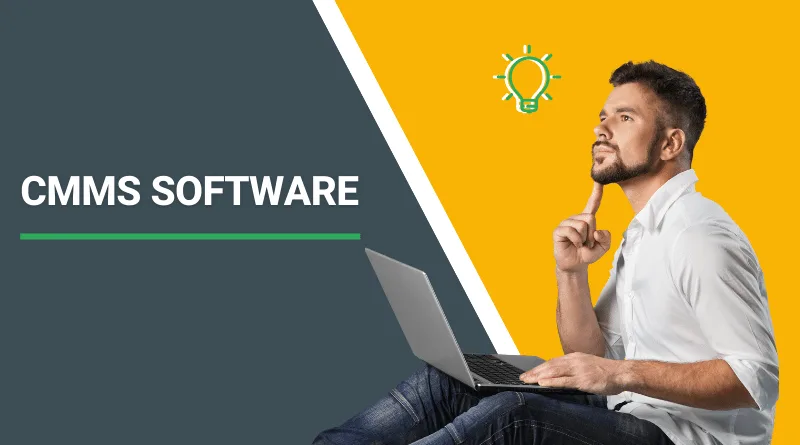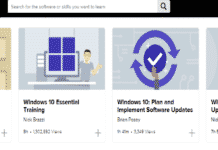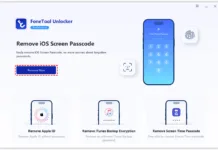If you are in an industry that utilizes heavy equipment, you probably know about CMMS and how it makes it easy to maintain equipment and boost productivity. However, when introducing software, you must help your team work with it and navigate the design to make the technology valuable.
Therefore, it is crucial to take some time to choose the right CMMS software from the numerous alternatives in the market. The following are six vital things you should do.
1. Set Clear Goals
Before you choose the CMMS, it is crucial to define your organization’s goals and needs. Begin with evaluating your maintenance needs and processes and the challenges and ineffectiveness you meet.
You will need to assess the assets in your company, the size of your business, current demand and software capabilities, maintenance tasks and procedures at hand, and specific requirements you must adhere to. Do you comply with maintenance regulations or need software to help you? For instance, generator maintenance is mandatory, and there are regulations you must abide by. So, consider how much you need care and how the software will help you achieve these goals.
You may need software to improve maintenance efficiency, increase equipment lifespan, and reduce downtime and maintenance costs. Once you understand your organization’s needs, it is easy to pick the best CMMS to meet them.
2. Compare CMMS
Now that you understand your organization’s specific needs, the most important thing you should do is compare CMMS options. Check the services and features and how you will incorporate them into your current system. When comparing CMMS, consider factors like:
User-friendliness
Check how easy software will be to use in your organization. The interface, layout, navigation, and instructions should be simple. This way, it will be easy for your team to adopt it in maintenance processes.
Capabilities
Does the software have features and capabilities that will be valuable to your organization? You need software with features like preventive maintenance, word order management, analyzing and reporting tools, and asset lifecycle management.
Cost
Another vital factor is comparing the costs. Check the licensing fees, subscription costs, and any other upfront costs. Weigh the benefits of the software with the charge to know if it is worth investing in the software to achieve your organization’s goals.
Support
Choosing software with support resources like user manuals, tutorials, and technical support is crucial to ensure your team can quickly get used to the software and use it effectively.
3. Create a List of CMMS
After you have compared various CMMS options, you will need to come up with a list of potential vendors. You can request trials for each to see how it works. Ensure you give the vendor details about the company and what you want to achieve with the software.
The vendor will tailor the demo software to your needs to help you understand how the CMMS will meet your goals. Look for things like:
Asset Management
The CMMS you choose should allow your company to manage and control the performance of your assets, including the location of your assets, asset management lifecycle, and maintenance. It should incorporate inventory and asset management to scale up as your needs grow.
Inventory Management
The CMMS should allow you to manage inventory, from placing orders to tracking sales and stock. It should help you overcome supply chain problems and improve inventory accuracy. How many assets do you have, where are they, and how much are they worth? You can make these vital decisions in a matter of seconds using your CMMS.
Software Integration
It is also vital to check if the software easily integrates with other systems in the organization. Your software must integrate seamlessly with other systems to make workflow efficient. It should be quickly adopted to improve maintenance processes and boost organizational capabilities.
Reporting and Analyzing
You need to be able to track your KPIs and make data-driven decisions when using the software. You will only achieve this by choosing software with reporting and analysis features.
Managing Work Orders
The CMMS you pick must also allow you to create and assign work orders and track these orders. This will enable you to keep maintenance in order and improve efficiency. Remember, your equipment will be reliable if you can adequately manage how they are utilized. Therefore work order management is the best process for businesses.
Preventive Maintenance
Preventive maintenance is crucial for your organization. Therefore, the CMMS you pick must enable preventive maintenance that will allow you to schedule and monitor maintenance processes. It comes with automated scheduling through defined criteria.
4. Consider the Benefits and Costs of the CMMS
Evaluating different CMMS options on your list will allow you to come up with a couple of them that you might consider. Another crucial step you should take is comparing benefits and costs. Check software costs like licensing fees, implementation costs, training costs, and subscription costs.
Compare these costs with the help of software to determine its worth. You will need a budget for the software and the cost of implementing it. Don’t forget to include long-term costs and benefits.
Check References
You need references from companies and organizations using or have used the software to understand how it works and the kind of support the vendor gives. Speak to these companies to understand the software performance in a natural setting and how organizations have achieved their goals using CMMS.
You can also check case studies to understand organizations’ situations and how the software has helped overcome them. You can get examples of specific conditions of maintenance processes the software has helped organizations achieve their needs.
By looking at references and case studies, you will gain valuable insights into how the software works and how it has helped organizations. You will then be able to make a decision based on this information.
Summary
You must check these vital things to pick CMMS software that meets your company’s needs. Make sure you will not incur more long-term costs when using the software. It should be a valuable investment that makes maintenance processes more manageable, cheaper, and efficient.
So, follow these five steps and pick software suitable for your company’s needs and goals. It should support your organization’s specific goals, streamline management processes and provide tools to optimize operations. Don’t forget to involve your team in your decision and allow the team to test the software before you purchase it. Testing helps you understand how it works and if it will be compatible with other systems and support maintenance activities.




